What programs and initiatives are out there to encourage girls in sports?


What programs and initiatives are out there to encourage girls in sports?

You can lead a toddler to bed, but you can’t make her sleep. Oh sure, there are things you might be doing that could make lulling your sweetie to sleep more difficult, and the internet is full of tips and tricks that help (sometimes) ease a sleepy child to accept that it is indeed time to rest. But too often, parents and children become locked in a battle of wills over sleep. I know, because it happened to me. With all three kids.
My kids are 8, 6 and two. All three of them had sleep issues. And the issues were different for all three. Now that my older two are through the toddler years, I have concluded:
Before my first child was born, I read practically every baby and toddler parenting book in the New West library (and a few more off Amazon) to get myself ready for this Mom thing, paying particular care to the advice on sleep. Unfortunately for me, my son was unfamiliar with the ‘expert’ recommendations. I was doing all the ‘right’ things, but my son still slept all wrong.
In retrospect, being so concerned about being a good parent led me to behave rather foolishly at times. I was in tears more times than I care to admit over my inability to make him sleep. Then I had two more kids, and eventually realized most of my earlier struggles were pointless. Learning each child’s rhythms and developing a daily routine that works with their natural rest and active times was far easier and more effective than imposing a routine I read about in some book.
For example, my first child has always been an early riser. I tried everything possible to get him to sleep later, including blackout shades, later bedtimes, and even teaching him to read a clock and forbidding him to get out of bed before 6am. Eventually, I realized nothing silenced his inner alarm clock, and I began enforcing an early bedtime and coaching him on what to do in the morning when he woke up. Little by little, he learned how to take care of himself in the morning, starting with identifying some toys to play quietly with, and eventually how to make his own breakfast and get dressed. By the time he was in kindergarten, he was dressed and ready to go to school before I was even out of bed. My youngest daughter takes after her brother, and now my son feeds her breakfast before I’m out of bed too.
My middle daughter, on the other hand, isn’t ready to go to sleep until later. She has billions of questions to ask at bedtime. Literally, billions. She has always been a bedtime procrastinator, and almost always sleeps in. My little night owl’s brain is very busy at bedtime, and it takes her a long time to get going in the morning. I have to wake her up for school and coach her through the morning routine while she’s bleary-eyed and grumpy. For her too, the template was set as a toddler. While my son was already mostly asleep, she was asking for endless glasses of water, kicking off her covers and demanding to be tucked in again, and then claiming to need to go potty. My answer to this has been to tuck in her siblings first, who both drop off to sleep quickly, and then plan to spend a little time talking about a few of the concerns swirling around my daughter’s mind. She is gratified to have a little one-on-one attention, and I am happier when I plan to spend a sweet little moment with her before bed than when she acts out to demand my attention.
As for my youngest, she has been trying her hardest to give up naps since turning two. I staved it off for a while, by strategically timing walks with the stroller for the time of day when she was at her sleepiest (scoring a double benefit of some exercise for me and rest for her) and more recently, simply declaring that if she doesn’t nap she has to go to bed right after dinner to ensure she gets enough sleep. She understands the bargain, and on days when she does nap, she gets to stay up until her siblings go to bed. Like her brother, her wakeup time seems innate, and does not change when she goes to bed later.
With all three children, tantrums about sleep were a signal that I needed to adjust our family routine from what worked for the kids as babies. The testing of the toddler years is related to children’s discovery of themselves as individuals, and a growing need to test their ability to choose and do for themselves. It is also a wake-up call to parents to see children as separate people with likes and dislikes that may be different from ours. I don’t see the testing around sleep as any different. The limits and routines we set need to change as kids get older, and conflict is one of the signals that triggers change.
The biggest lesson I have learned about sleep is that many things can disrupt it, and the best fix for it is to stay connected with your kids and give yourselves time to figure out the routines that work best for you.
The reasons behind sleep refusal and other difficult bedtime behaviours need to be resolved before the problem can be solved. Developmental changes, nightmares, anxieties and fears, potty training, hunger, thirst, and many other factors can disrupt your sleep routine. I find it helps to remind myself that not sleeping is an effect, not a cause. Some causes of sleeplessness are possible to troubleshoot, but others are resolved only with love and time.
Written by Briana Tomkinson
As a primary teacher, I am often asked by parents about the best ways to support their child’s early literacy skills.
It is interesting; however, that a great deal of your child’s literacy development happens before they enter the school system. Parents and caregivers play an integral role in developing and promoting a child’s language skills. In fact, the first five years of your child’s life creates the literacy foundation upon which teachers and the education system continue to build.
So, what are early literacy skills?
Early literacy skills can be fostered and developed anywhere including the home, daycares, preschools and in the community.
The great city of New Westminster offers many opportunities and venues to help you and your child to begin their exciting journey learning to read.
Around the City
The New Westminster Public Library (NWPL)
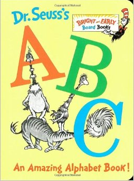 Story time is offered by the NWPL for caregivers with babies (ages 0-23 months), caregivers with preschool aged children (ages 2 – 5 years), and for families (all ages)
Story time is offered by the NWPL for caregivers with babies (ages 0-23 months), caregivers with preschool aged children (ages 2 – 5 years), and for families (all ages) NWPL also has concept books that you can borrow. Examples of concept books are alphabet books and numeracy books.
NWPL also has concept books that you can borrow. Examples of concept books are alphabet books and numeracy books.
Strong Start Early Learning Centres
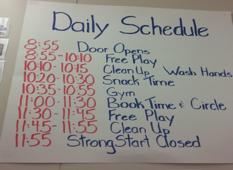
Activities for children may include:


Activities for children may include:
For more information, please see their website.
 Offers drop in programs for parents and children. Different programs are on different days such as Family Circle (3 -5 years old), Pitter Patter Circle Time (0-30 months), and Teeter Tots (0 – 30 months).
Offers drop in programs for parents and children. Different programs are on different days such as Family Circle (3 -5 years old), Pitter Patter Circle Time (0-30 months), and Teeter Tots (0 – 30 months).For more information of the programs and details, please visit their website.
I love spending time with my children. Activities at home can be done in the comforts of your pajamas for those lazy weekend mornings or spread out during the day.
These are some of the activities that promote early literacy skills in our children.
As you can see, whether at home or around the city, there are so many things that can be done to help foster and develop your child’s early literacy skills.
Written by: Sandra Tee, primary teacher
Edited and Revised by: Lindsay DeLair, teacher librarian
With thanks from:
Teachers often set up Home Reading programs to help support their students’ learning and to encourage parents to participate in their child’s literacy. Your child may be already talking about their reading experiences at school and using language that is unfamiliar to you such as predicting, accessing prior knowledge, and making connections, terms teachers use frequently during the reading process. What do these words mean and how can you, as a parent and caregiver, help your child in the reading process?
Although sounding out words is an important skill, good reading goes far beyond that. There are many other components to teaching reading. A strong reader will have excellent decoding skills and comprehension.
I will explain some of the processes your child may be doing in language arts during a reading activity and why it is important to the reading process.
Big Idea or Author’s Message
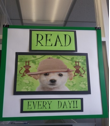 As you can see, all of these processes help your child deepen his/her understanding of what is being read. Readers need to anchor what they are reading to what they already know in order for new facts to be remembered.
As you can see, all of these processes help your child deepen his/her understanding of what is being read. Readers need to anchor what they are reading to what they already know in order for new facts to be remembered.
I cannot begin to express my gratitude to all the parents and caregivers out there. You are truly your child’s first and lifelong teacher. It has been said that it takes a village to raise a child. The same hold true for educating a child.
Written by Sandra Tee, primary teacher
Edited and Revised by Lindsay DeLair, teacher librarian
Clip art taken with permission from http://teachers.wrdsb.ca/shouftas/language/#contact

Last November I made a difficult decision. I left a high-pressure and rewarding job because I couldn’t put in the time required and still adequately parent my three young kids. My plan was to spend the next month recovering, reflecting and enjoying rich, quality time with my kids. I thought I’d do a deep clean and make our household less chaotic.
So it doesn’t make a lot of sense that my husband and I then chose to invite a family of six to share our home for a few months.
But we did. And I’d like to tell you why.
Years ago I listened to a radio show about a refugee family in the Middle East. No, I don’t remember which country – that’s how much I know about world affairs. The mother’s voice moved me to tears from across the world. She didn’t feel safe and she couldn’t keep her children safe. I thought about what it would be like to be that mother. How easily that could be me. How her children are as precious to her as mine are to me.
I decided that day that I wanted to do something, some small thing, to help refugees displaced from their homes. In fact it was less of a want, and more a feeling that this is something I need to do as a human being with extraordinary privilege on the planet.
Sponsoring a refugee family never seemed to be in the cards of our family’s household budget. That commitment – which others in New Westminster are making – calls on the sponsoring group to cover a family’s costs for a whole year. But when we saw a call online for temporary housing, my husband and I decided to pitch in. We looked around at our messy, chaotic home. It hasn’t been baby-proofed for years. We’re close to the line of eligibility for that hoarding TV show. Our children, arguably, could use a lot more attention from two distractable working parents.
But like having your first child, we decided the time is probably never perfect to add six people to your home.
The Edom family has been living with us now for two months. And no, we weren’t ready. Yes, the kids complained after the initial honeymoon wore off. The baby knocks their toys over. The boys had to be banished from my kids’ bedrooms after a series of disasters. The smell of spicy goat meat cooking took some getting used to. It’s remarkably challenging to go ice skating with seven kids and one adult who can’t skate.
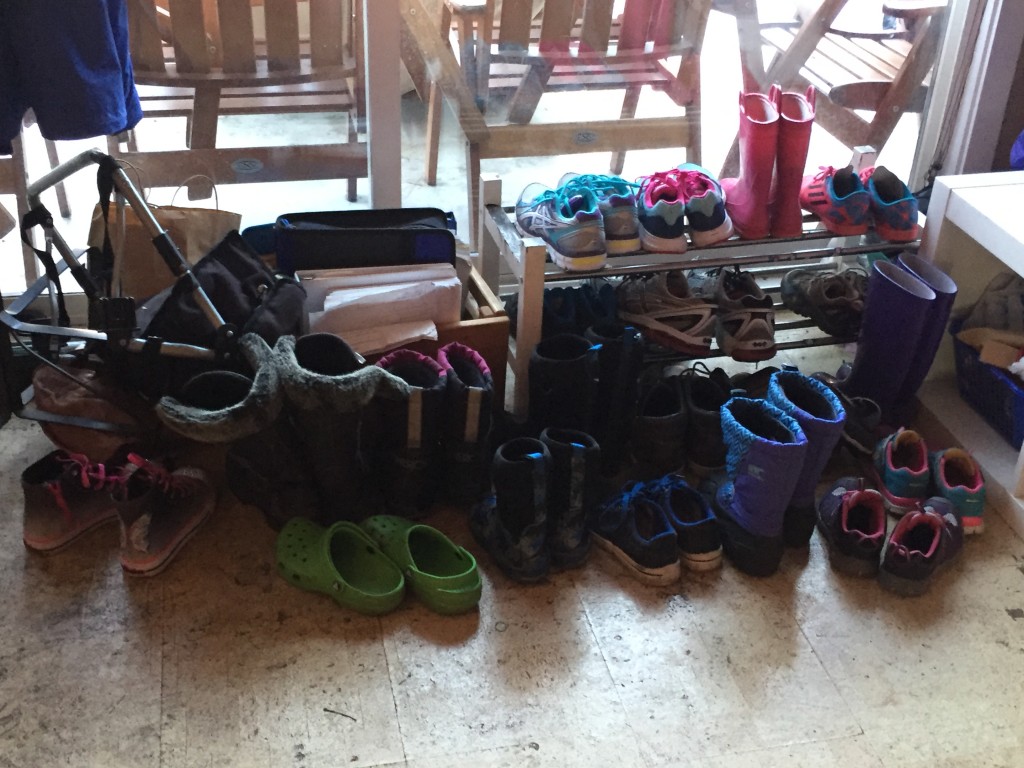
But it’s been an unforgettable experience that we don’t regret for a moment.
We got to watch four young children experience snow, snowballs and sledding for the first time.
We are learning about life for regular folks in an African country – much more than we learned during an expensive family vacation to South Africa.
We learn anew every day that children are all the same. They don’t like seeds in their bread. They want to be pushed on the swings. They don’t like having their hair done. They like any playground, anywhere.
We are walking beside a courageous, resilient family as they face the reality that they can’t return to their home, their families, and their business. That this cold, rainy place is their new home. This family gets up every day and takes the next step whether large or small – applying for refugee status, getting the kids into school, figuring out the Compass Card, getting immunizations. Every day a challenge that involves a stack of paperwork they find confounding.
A couple of weeks ago was a turning point. One of my kids climbed over the wooden baby gate to the Edom’s space in our loft to get some time with baby Mandela. It was the first time my kids had gone to their “home”. The other kids soon followed, and a sleepover was held in the loft. It was a small but important power shift.
Yesterday’s triumph: Dad Emeka made a Nigerian dish that my kids adore and is their new favourite meal (indomie – noodles with egg). When we started this adventure, I never thought they’d be asking for Nigerian food by name. Who knows what other surprises are ahead for us.
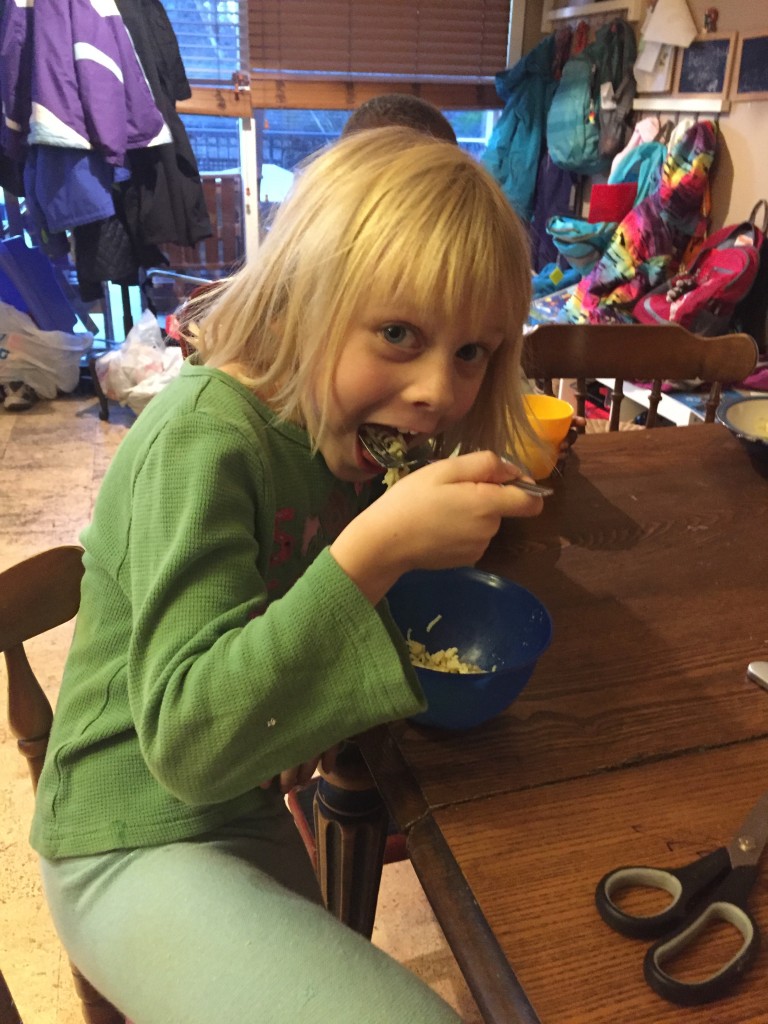
If you have felt the urge to walk beside refugees, but talked yourself out of it because you don’t really have the room, or it’s a little too disruptive, I urge you to take another look.Like having a child, you’re never ready. The Edom family also wasn’t ready to leave their life behind. But they’re here, they’re doing it, and they could really use a hand.
Written by Maya Russell

Allowance comes up in casual conversation a lot these days, now that I have a school-aged child. Some people feel awkward talking about it, I guess because it’s money. But years ago we decided to track our monthly budget on a giant white board in the kitchen where we could see it, and of course so could all our friends. And some of them even asked us questions about it. (Horror!) Since the world didn’t implode, it seems that talking about money isn’t actually such a big problem. In fact, I think it’s important to talk about it freely if we want to raise financially literate kids.
Anyway… Here’s how we started this conversation for our family.
After the reading and the talking, we came up with our own list of priorities. Once we knew what we wanted to achieve, our allowance system basically created itself. We use allowance as a financial teaching tool, and for it to have any meaning, it needs to be a model of the real world. Our priorities are:
There’s some good tips on meeting those goals at Money As You Grow if you ignore the US-specific bits.
REALITY
Allowance isn’t tied to chores in our house. Nobody pays me to clean the bathroom! They do have responsibilities around the house, but I view that as part of life. I simply expect all the people in our family to contribute to our daily lives.
We approach allowance as a learning experience, and we also believe everyone in our family should have control over at least a tiny bit of the monthly budget. We started allowance as soon as we saw our kids grasped the basic concept of money, which was age 4 or 5.
We also have bank accounts for the kids, so they’re learning how that works. (Sorry to everyone who’s ever been in line behind us at the ATM on the day they’re depositing their money.)
CONSISTENCY
Because we view allowance as a tool for teaching financial planning, consistency is key. We hand out allowance once a week. The kids know what they will get, and when, so they can make decisions. When they see something they want to buy, I help them evaluate the choice. How much does it cost? How much do you have? Is there anything else that you might want to have money for? Do you remember how you felt the last time you spent all your money on a stuffed toy?
ACCOUNTABILITY
They are responsible for their money. While we do help them evaluate their choice, they get to make the choice, and they have to live with the consequences. My youngest recently decided he wanted a toy owl (because we’re into Harry Potter right now). We suggested he ask for the owl for his birthday, which is 4 months away, but he wants it *now* and decided he’d buy it himself. I reminded him about the big ticket item he’s currently saving up for, and he chose to buy the owl.
He had a meltdown when he got home and decided that *actually*, he should’ve asked for a toy owl for his birthday, because now he can’t put that money aside for the item he’s saving up for. While his heartbreak was very sad, he learned an important lesson: You can only spend your money once. I intend both of my children to get to adulthood with that knowledge intact.
USEFULNESS
The allowance has to be useful. We feel it’s important to give our kids a realistic budget for the things we expect them to buy. Right now, their money is only for things like beanie baby key chains (which I sure as heck am not paying for), so their allowance is quite small. We did $1/week in Kindergarten and $2/week in Grade 1. I think we’ll do a fairly significant jump in the amount in Grade 2 or 3, and when that happens I’ll start expecting the kids to use their own money for more things.
When they’re teenagers, we plan to give them budgets for things like going to the movies as well as letting them take care of a monthly bill or two (such as a cell phone). They’ll have enough to meet their commitments and have a little fun, but they’ll have to make choices.
HOW’S IT WORKING?
This past fall, for the first time I gave my 6 year old a big chunk of money to control. She needed a whole bunch of new clothes. I think she had about 5 pieces of clothing that fit.
The adults decided she could have $200, and we made a list of the items that she absolutely had to purchase. She also had a list of things she *really* wanted, including a sweater from Bench. (Because: thumbholes.) We talked about how we would have to shop really carefully to save enough money for a Bench sweater ($50!).
That kid did great. We went to the thrift store, the outlet store, and shopped off the sale racks. And she got that Bench sweater, and she loves it. I think we’re doing OK so far!
Written by Natalie Lawy, a New West parent to two.

For a child, and most adults, the difference between a great day and a difficult day is how well they slept the night before. Sleep lets our bodies wholly recover and gear up for whatever adventure the alarm clock brings.
There are many factors that can help your family achieve amazingly restful sleeps. Not surprisingly, nutrition plays a key role in our slumber. If you’re struggling with your child’s sleep schedule, here are some timely tips.
Infant Sleep
The Canadian Paediatrics Society recommends babies 0-6 months get between 14-18 hours of sleep. At this stage of their lives, their systems are sustained with breast milk, formula or a combination of the two. If you are diligent with sleep training and watch for their sleep cues, sending them off to bed at night with a belly full of milk is the best bet for an extended period of rest. Keep in mind babies are babies. They aren’t the most reliable sleepers and this will typically be the most challenging stage of their sleep careers; ask any sleep-deprived new parent and they will agree.
Toddlers
The American Academy of Paediatrics says you should start your child on solids between 4 and 6 months of age. One of the most common foods parents mash up and serve to their toddlers is a banana. It’s naturally sweet, packed with fibre, potassium, vitamin C and B6 and just happens to be a food that naturally promotes good rest. Other age-appropriate rest-inducing foods you can add to baby’s dinner include mashed avocado, scrambled eggs and yogurt.
Preschool Age Children
At least 50% of preschoolers display bedtime resistance on a regular basis – their brains are so curious and they aren’t willing to give up on consciousness without a fight. Nutritionist Emma Sutherland suggests adding foods loaded with protein, omega-3 essential fatty acids, and zinc to dinner. Doing so will help keep them fuller for longer, and prevent them from waking 3-4 hours after going to bed. Ideas include fish, salmon, avocado, beef, chicken and tahini. If your child is a picky eater, work fish into meatballs with spaghetti noodles, and hide avocado in this delicious chocolate pudding.
School-aged Children and older
As children grow, their palates and appetites increase. Parenting author and expert Annabel Karmel recommends the magic of food combining to attain maximum rest. The trick is to combine foods rich in tryptophan (nuts, poultry, oats, bananas) with healthy carbohydrates. Carbohydrates cause the release of insulin, which helps tryptophan reach the brain and cause sleepiness. Some great and tasty ideas the whole family will love include:
As school-aged children often raid the fridge and pantry after dinner, make sure they avoid foods with hidden caffeine – bottled teas, store-bought chocolate and coffee-flavoured ice cream. These Lullaby Muffins, that can be baked in large batches ahead of time and kept frozen, are an excellent “midnight snack.”
Food is our fuel and has a great impact on our health and sleep. Remember too that outside distractions can impact a restful night’s sleep. Naturopath Joyce Johnson recommends turning off all devices (phones, tablets, TV) before getting ready for bed.
After a sleep-inducing dinner, following a night-time routine that is calm and quiet, like a soothing bath followed by a favourite story, is an excellent ease into sweet dreams for all the members of your family.
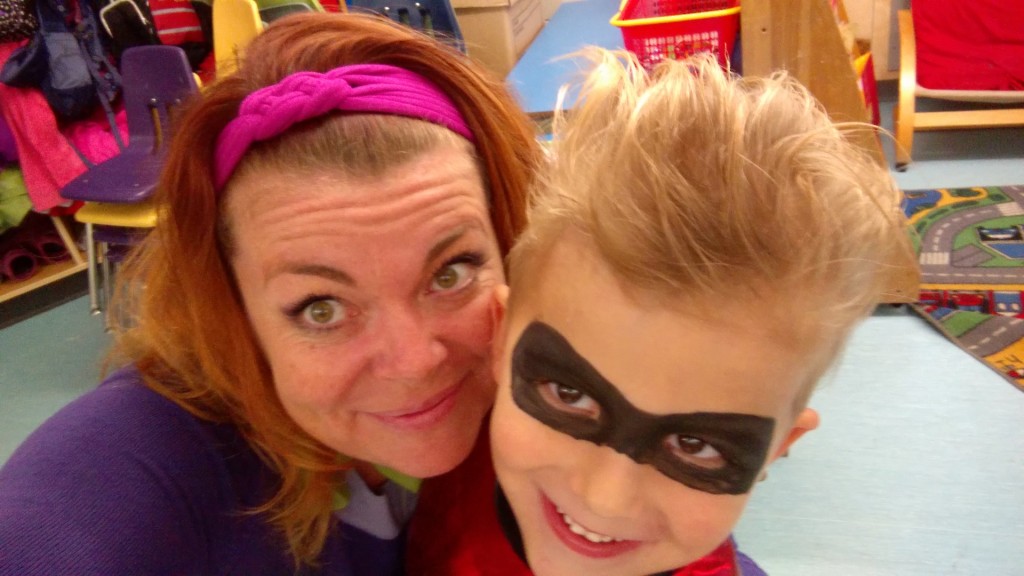
There is something magical and wonderful in the mythos of superheroes. Often reluctant heroes who are thrust into deeds of daring do because of interactions with a radioactive bug of some kind. Or gamma radiation. Or something equally out of this world. I love it when my kid pretends to be a superhero. He wants to save people and defeat the bad guys and fly to the stars. His imagination becomes boundless as does the world around him.
So needless to say, many of our book choices involve superheroes. Here are a few of my favourites. Some familiar, some unexpected but all approachable to boy, girl, man and woman…and even dog. Books that can inspire the tiny hero in all of us.
Tiny Titans -Art Baltazar (series)
The Tiny Titans are the perfect introduction to some of the well known heroes in the DC Universe. But these heroes are in elementary school. Robin, Speedy, Kid Flash, Wonder Girl and my son’s personal favourite, Raven, all make appearances as they go through the day to day adventures of being school aged super kids. Presented in a fun, comic book style.
WARNING: This book contains knock knock jokes.
L’abecedaire des super-heroes Agnes de Lestrade et Cristian Turdera
My son is in French Immersion, but even if he wasn’t, this book would be in our library. The illustrations are beautiful and the superheroes are in every day situations that are, at times, a bit off colour.
WARNING: we laugh at potty jokes in our house.
The Rover Adventures-Roddy Doyle
I love Roddy Doyle. When I discovered that he had written a trilogy of kids books with a super awesome dog as the star, I picked it up. For myself. Before my son was born. Rover doesn’t wear a cape, but he acts like a super hero in all sorts of crazy situations where he is put to the task of saving his family. The mom is also a mountain climber.
WARNING: These are very British Isles-ish books that come with ‘translations’ for those not raised on Upstairs Downstairs and Monty Python. Also, there is a lot of poo.
The Astonishing Secret of Awesome Man
Yet another book that was discovered because I love the author. The Amazing Adventures of Kavalier and Clay is one of my favourite books, and this one is equally marvellous. It has everything a superhero loving kiddo could want-positronic laser beams, squishy slime, bad-guy butt-kicking, a sidekick super dog. And the super identity of Awesome Man? Also amazingly awesome.
WARNING: Encourages your child to try to find out your secret identity.
I do find it frustrating that there are not as many female superheroes in younger kid’s fiction as males. This is a travesty of justice. Thankfully, there is Ladybug Girl. Ladybug Girl uses her imagination to have adventures in her back yard, and soon her friends join her in the guise of Bumblebee Boy and the Bug Squad, and, of course, Bingo the Basset Hound.
WARNING: Encourages the anthropomorphizing of insects.
Captain Underpants has become a bit of a bone of contention in our PAC meetings. There are some who do not enjoy the inclusion of Captain Underpants in our library. I however think he is awesome. He’s goofy, approachable and might just encourage those kids who aren’t natural readers to embrace the chapter book. I also love that he is based on a comic book that the author created when he was a kid.
WARNING: We really laugh a lot at potty humour in our house.
The Flying Beaver Brothers (series)
We just discovered the Flying Beaver Brothers in our house. And they. Are. Awesome. Ace and Bub are brothers. One loves extreme sports. One loves napping. Together, they are the Flying Beaver Brothers who thwart evil penguins, bunnies, moles and more. Presented like a graphic novel, this book is one of the most fun we’ve read in ages and it is great for more reluctant readers.
WARNING: This book is best read with silly voices. Especially for Bruce, the nemesis beaver.
Written by Erin Jeffery, local parent and fan of costumes.

Once baby makes three, many new families explore moving to a larger space. The dream used to be a house in the suburbs, an idyllic landscape filled with lawnmowers, lemonade stands, cul-de-sacs and a million neighbours to borrow an egg from.
What if you choose to stay in your small but cozy condo space? What kind of community can be fostered when everyone is literally on top of each other?
As a condo dweller, I’m please to tell you that despite the lack of driveways and doghouses, living in a building with many families under one giant roof promotes an even greater sense of community.
Every floor of the building becomes its own avenue. After dinner, doors are propped open and the adults share a beverage and a laugh, while the small army of kids have a hallway play date, weaving in and out of different units.
The old saying of “it takes a village to raise a child” is perfectly illustrated with condo living. When a family welcomes a new baby, we quietly drop off casseroles on their doorstep. Parenting advice and tips are eagerly shared. Children without siblings have a chance to make fast friends with neighbours to prepare them for the inevitable social onslaught of kindergarten. Once school does start, neighbours take turns with school drop-off and pick-up.
You never have to jump in the car if you’re out of milk or sugar or diapers – help is just a two-step-out-the-door knock away.
At Halloween you don’t even need to put shoes on if you want to take the kids trick-or-treating. The weather is a non-factor as you escort them floor by floor, door to door and watch their bags fill with candy. (The condo with the hot toddies should be your first and last stop.) And come Christmas, festively festooned front doors replace hours of treacherous outdoor light hanging.
There aren’t any picket fences and Frisbee tosses, but everyone can troop down to the local park with their badminton set and portable barbecues for a summer evening surrounded by nature.
Not everyone who lives in a condo is a peach. You learn who isn’t into small talk, or who hasn’t forgiven your kid for running down the halls like a mini elephant one too many times after dinner. You respect their privacy and only knock on their door if the building is on fire.
To be fair, as an introverted person who works full time, I’m not always in the mood to pause and chat outside the elevator. My To Do List clangs in my ears – I have dinner to make or bath time to prepare or laundry to sort.
However, the time I do spend with my neighbours is time spent that I never regret. After years of watching our children grow, sharing triumphs, working through low points, and supporting each other on a daily basis, my neighbours aren’t just neighbours anymore. I’m proud to call them friends.
Written by Brooke Takhar, a local mom to a wonderful six year old.
Parents Night Out and NWPD present “Digital Citizenship” with Jesse Miller, Jan 28th, 6:30 to 8:30pm at JIBC. Learn about social networking and what kids are really doing online. Details: jesse miller poster